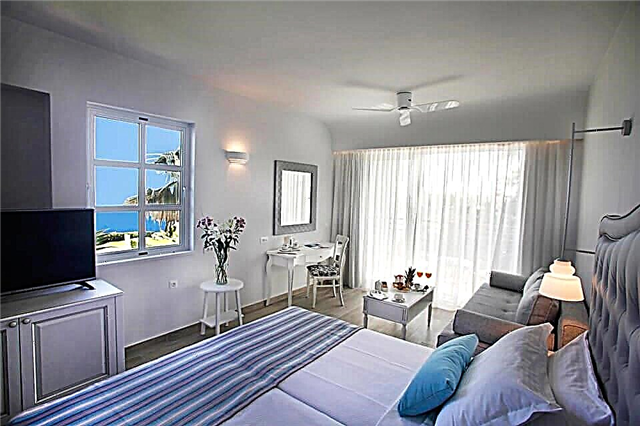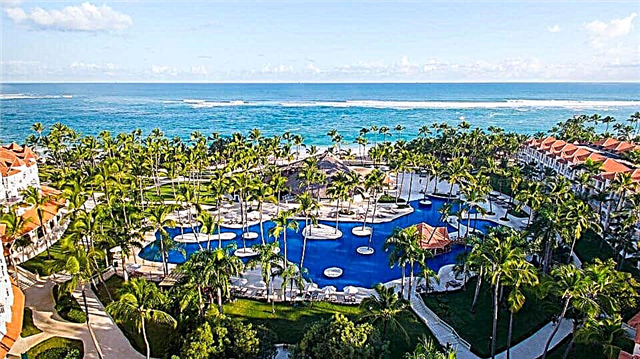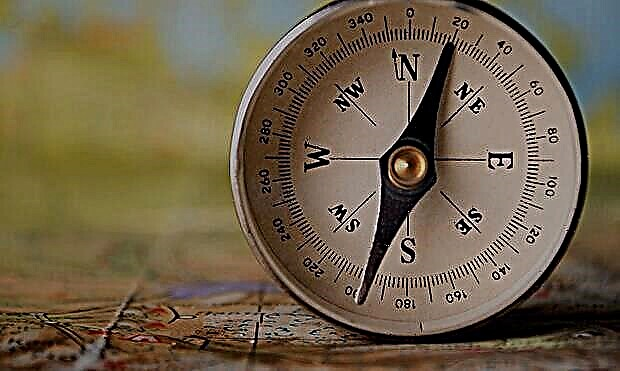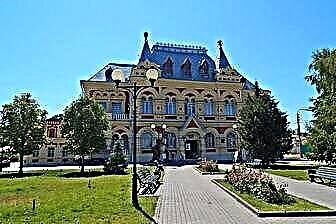Hungary is one of the countries of Central Europe, stretching 93 thousand square kilometers between the Alps and the Carpathians, in the north of the Middle Danube basin. The largest river Danube divides its territory into 2 parts, each of which is represented by several counties, or regions (there are 19 of them). The capital of Hungary is Budapest.
Content:
sights
Short description
It is noteworthy that the first mentions of the country in ancient writings date back to the sixth century BC. In those distant times, its territory was inhabited by Thracian and Illyrian tribes. A couple of centuries later, they were joined by the Celts, who easily settled in the conquered areas. At the beginning of the 1st millennium, Hungary became part of the Roman Empire and received a new name - the province of Panonia. The end of the III century was marked for her by 2 events, one of which was the spread of Christianity, the other - the attack of the northern Germanic tribes, which led to the first crisis in the once economically prosperous country.

Basilica of St. Adalbert in Esztergom
In 271, the Romans went beyond the great Danube, and eventually left the country altogether. In the 4th century, various nationalities began to settle on the territory of Hungary, receiving the status of federates from the Romans. Later, the Huns also appeared here, ruling most of eastern Europe. However, their triumph did not last long - the state of the Huns ceased to exist immediately with the death of Attila (453).
In the 6th century, Hungary entered the Avar Kaganate, a powerful new state. And again, its territory began to accept new tribes - now they were Avars and Slavs, dependent on the Avars. Subsequently, the Slavic tribes, under the leadership of the leader Samo, rebelled against the hated Avars and created their own association of Slavic tribes - an independent State of Samo.
And at the end of the VIII century, Hungary was replenished with another nationality - the Hungarians, thanks to whom the country got another name, by which we know it now. Before the Hungarians took root in a new territory for them, they roamed a lot, periodically attacking neighboring rich countries. This continued until 955, when Otto the First, who served as the emperor of the Roman Empire, dealt them a crushing blow.

Cathedral of Our Lady of Szeged
Hungary has experienced many different events. Each millennium was marked by serious changes for her. This was the arrival of the first king Istvan the First, and the expansion of the territory, and the transformation of the kingdom into many independent principalities. Against the background of these events, a serious struggle for the Hungarian crown unfolded, the owner of which was the new king with the double name Karl Robert of Anjou, who was noted in the history of Hungary for having managed to unite the once disintegrated power. But in the 15th century, a new threat loomed over the well-being of the country - these were the Turkish invaders, who easily defeated the Hungarian army near the town of Mogach (1526). This event led to the territorial division of Hungary. So, its central part was in the power of the Turks, and the northwestern and western parts were annexed to Austria.
In the 17th century, at the Karlovets Congress, a decision was made on the entry of the Kingdom of Hungary into the Habsburg Empire. The country was part of it until 1918. Today Hungary is a member of the European Union.

Benedictine monastery of Pannonhalma
Mild climate - why not visit Hungary at any time of the year?
Hungary's climate is influenced by two factors - its position within the Carpathian arc and the influence of westerly winds. In the cold season, the mountains do not allow air masses moving from the north and north-east sides, so in winter Hungary is much warmer than in Yugoslavia, Ukraine, Slovenia and Croatia - its eastern neighbors. Summer is long and hot here, and July is recognized as its most sultry month, with an average air temperature of 24.7 degrees. And the coldest month in Hungary is January, although its average temperature has never been recorded below -4.1 degrees. Interestingly, in terms of the number of hours of sunshine, Hungary has the highest rate - 1979 hours / year, which is more than 80 days.
Landmarks of Hungary, created by nature itself
What to see in Hungary? If you are not interested in architectural monuments, head to Lake Balaton, called the Hungarian Freshwater Sea by the Hungarians. Despite its shallow depth, it is navigable. Scientists have established that there was indeed a sea here, but due to geological shifts and volcanic activity, the seabed has risen and transformed the landscape of the region. For tourists, this place is attractive for the many inactive volcanoes and hot geysers, showing their beauty and grandeur against the backdrop of the rugged northern coast.

Thermal Lake Heviz
The Tihany Peninsula, lost in the center of Lake Balaton, has been declared a protected area. Its attractions are two shrines - the Benedictine monastery and the two-tower church. At the western end of the lake, where it joins the Zala river, there is another paradise - this is the Kish-Balaton protected area (swampy shallow area overgrown with reeds and untouched by man).
Another attractive place in Hungary is the Alfred Plain, turned into national parks with an interesting name arid empty (the Hungarians call “empty” a spacious valley with lush grassy vegetation). And in our area we can call the steppe empty. The reserved area of Hortobadi welcomes tourists with herds of horses, on which elegant chikoshi riders sit. Of course, the empty space cannot be called picturesque, and its only decorations are wells-cranes. Tired tourists can stop for a short rest in chards - the so-called road snack bars, in which the atmosphere is set by gypsy motives.
Popular Hungarian resorts
On the western shore of Lake Balaton lies the city of Keszthely, and next to it is the warm-water lake Heviz, famous for its healing properties. Its water is naturally enriched with mineral salts, and the bottom is covered with silt, the composition of which includes radium. A stay at such a resort will be useful for people suffering from rheumatism, ailments of the nervous system and having a violation of the metabolic processes of the body. Water lilies blooming on the lake from May to November become an attractive sight for those who have come to rest.

Cathedral of Saints Peter and Paul in Pecs
Balatonfured, located in the northwest of the lake, is also a popular resort. This area is known for its cardiological sanatorium, which comes with healing water from natural carbon dioxide sources. People who come here on vacation in May end up in sailboat competitions. In the middle of summer, a holiday awaits vacationers - Anna's ball. An alley dedicated to Rabindranath Tagore, an Indian poet who lived here until 1922, has been planted on the territory of the resort area.
Cities of Hungary - monuments of culture and architecture
Sopron, a city located on the slopes of the Alps in Transdanubia, is worth a visit for its architectural originality and natural beauty. Historians recall that during the attack of Turkish troops, he was in no way damaged and with his appearance passed on to descendants the idea of the architecture of many Hungarian cities destroyed as a result of the Turkish invasion.
Esztergom, the ancient capital and residence of the head of the Catholic Church, used to stand on the site of modern Budapest.The attraction of this city is the Basilica Cathedral, which is also the largest cathedral. The ancient Szekesfehervar, which was the capital city before the arrival of the Turks, remains no less valuable. The cathedral, located in its center, turned into the crypt of the Hungarian rulers who ruled over state affairs until that time. The Turkish wars did not pass without leaving a trace for Szekesfehervar, because many valuable buildings turned into ruins, and now this place is called “Park of Ruins”.

Gödöllö Royal Palace
At the foot of the Bükk mountain range, there is another city, attractive for its many architectural, historical and cultural monuments - Eger. In its center you can see the remains of a fortress, reminiscent of the struggle between the Hungarians and the Turks. And in the bend of the Danube River lies the magnificent Vysehrad, which served as a royal residence in the 14-16 centuries.
When visiting Hungary, you should also visit Pecs, a noble ensemble of monuments of ancient Christianity. In the UNESCO list, it is listed as a world cultural heritage site. Debrecen, lost between the Hungarian Transylvanian principality and the territory captured by the Turks, is no less interesting for tourists who understand history. In the history of Hungary, this city is remembered by the proclamation of a declaration confirming the deprivation of the throne of the Habsburgs. And thanks to the Protestant cathedral, Debrecen received its second name - Calvinist Rome.
Where to go on vacation in Hungary, decide for yourself. Any of its territories is good in its own way, and it is difficult to argue with this, because every year about 50 million tourists visit it. Such a "boom" is an important factor influencing the national economy, since foreign exchange earnings from the tourism business are so great that they cover the imbalance in foreign trade.











